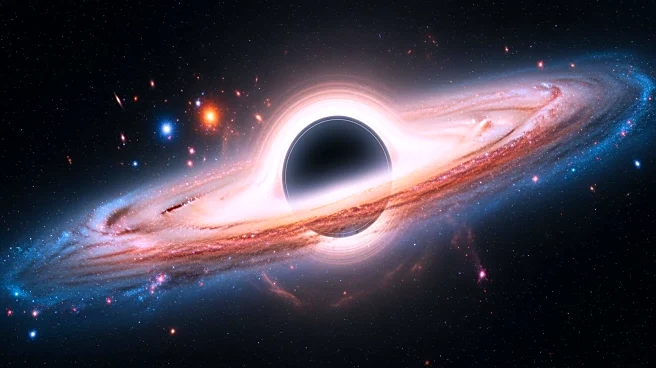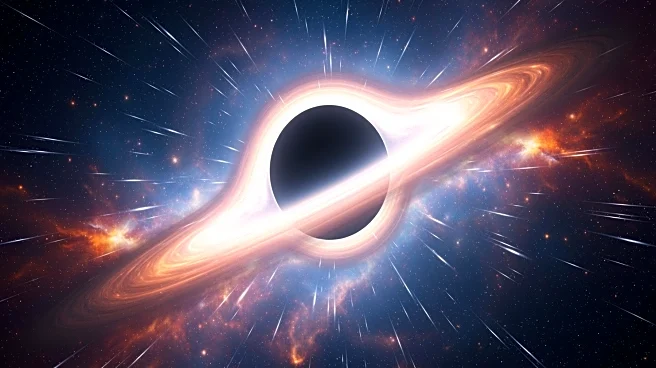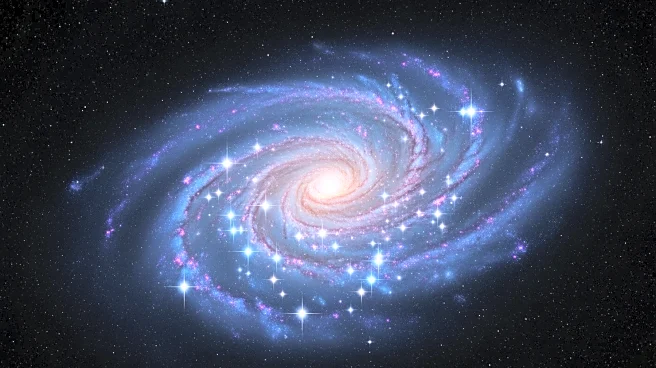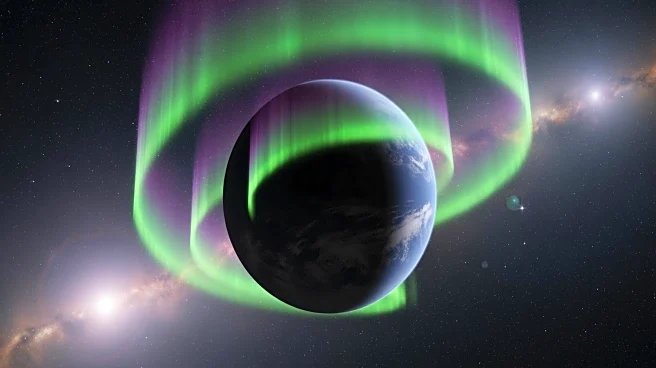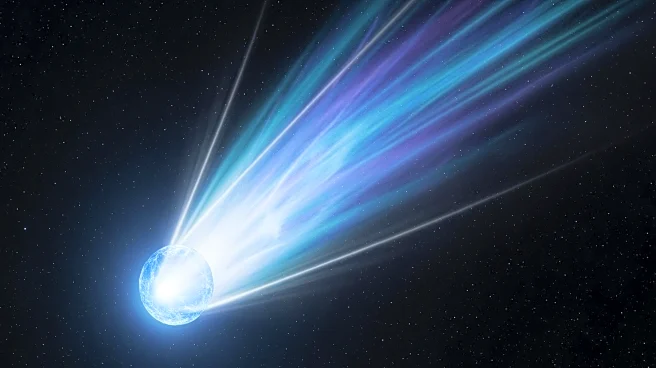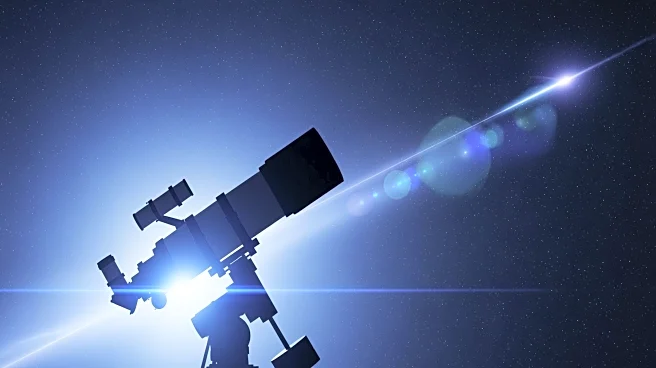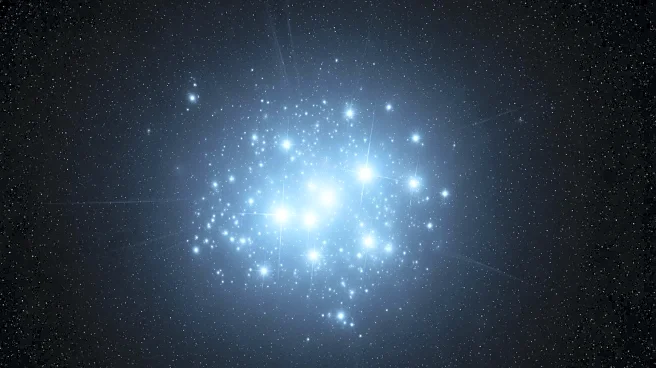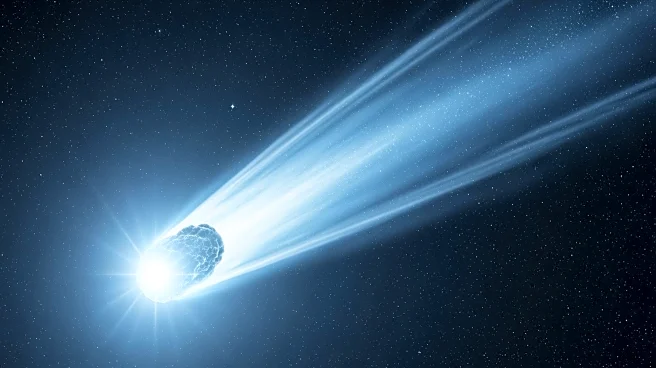What's Happening?
The Large High Altitude Air Shower Observatory (LHAASO) has resolved a decades-old mystery regarding the cosmic ray energy spectrum, which features a sharp decrease known as the 'knee.' Recent studies
have identified micro-quasars, driven by black hole accretion, as powerful particle accelerators responsible for this phenomenon. These findings, published in National Science Review and Science Bulletin, demonstrate that black holes in the Milky Way are significant sources of high-energy cosmic rays. The research involved detecting ultra-high-energy gamma rays from micro-quasars, providing new insights into the extreme physical processes of black hole systems.
Why It's Important?
This discovery marks a significant advancement in understanding the origins of cosmic rays and the role of black holes as particle accelerators. By linking the 'knee' in the cosmic ray spectrum to black holes, scientists have provided crucial observational evidence that challenges previous assumptions about cosmic ray sources. This breakthrough enhances our knowledge of high-energy astrophysical processes and could influence future research in cosmic ray physics and black hole studies. The findings also highlight the potential for new technologies and methodologies in space exploration and astrophysics.
What's Next?
The LHAASO's findings open new avenues for research into the acceleration capabilities of black holes and their contribution to cosmic ray spectra. Future studies may focus on further exploring the role of micro-quasars and other astrophysical sources in generating high-energy cosmic rays. Additionally, the development of more advanced observational equipment and techniques could lead to more precise measurements and a deeper understanding of cosmic phenomena. These efforts may also inspire collaborations between international research institutions to expand the scope of cosmic ray and black hole research.



